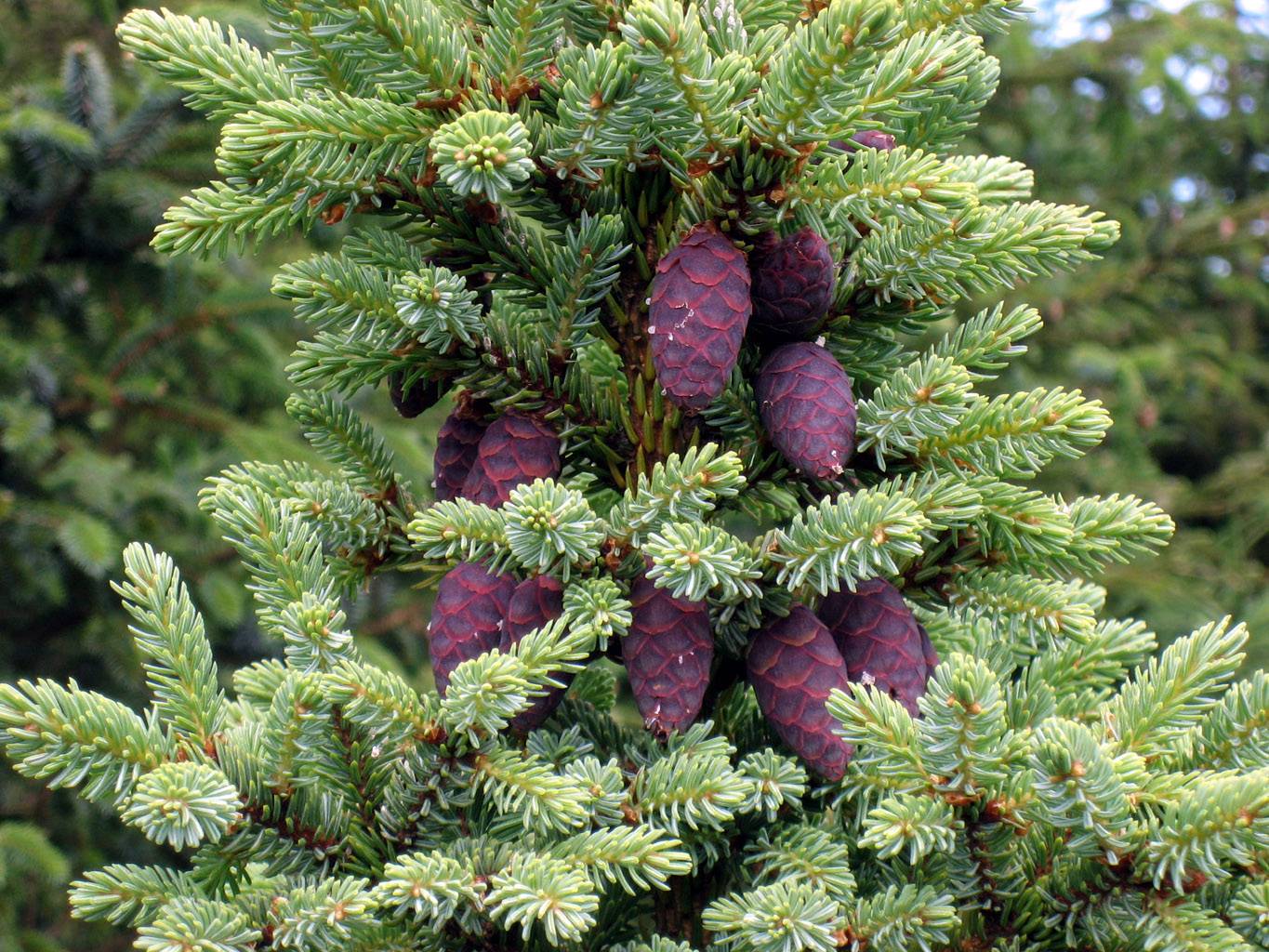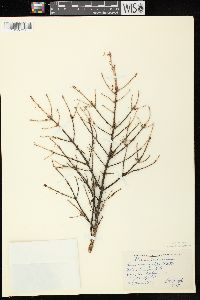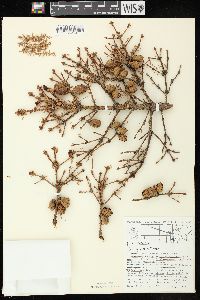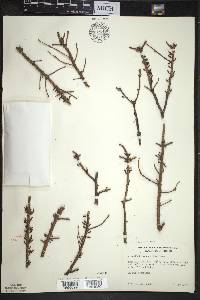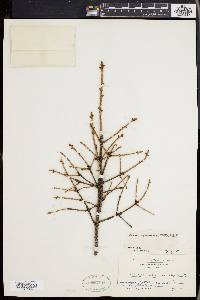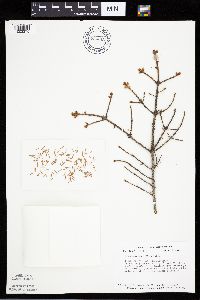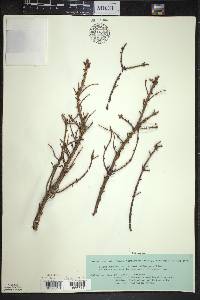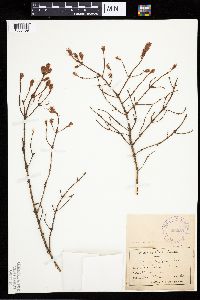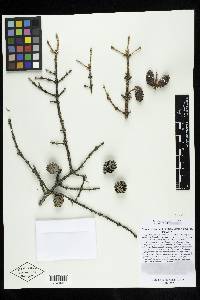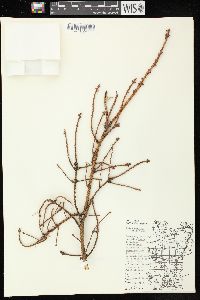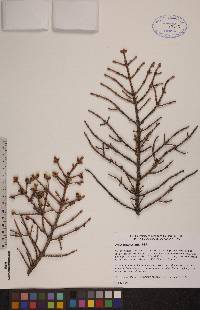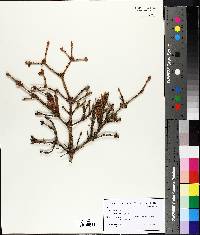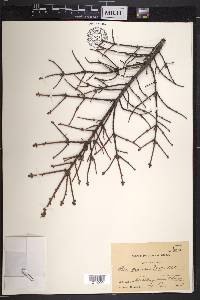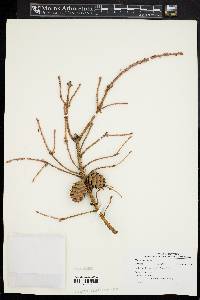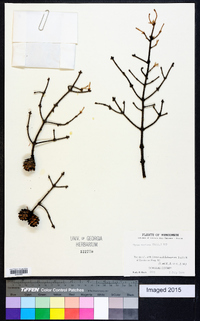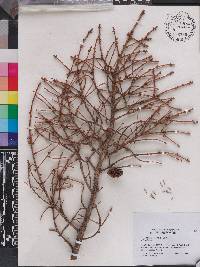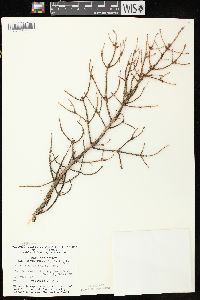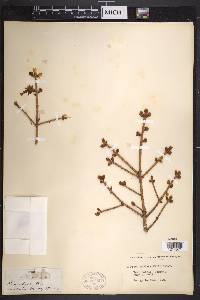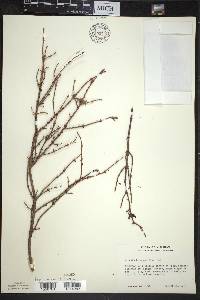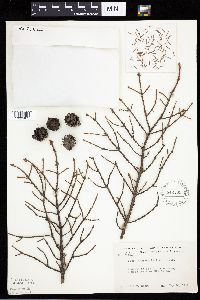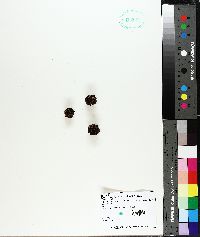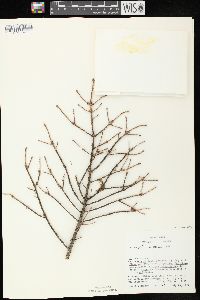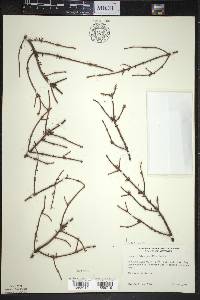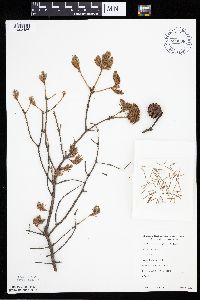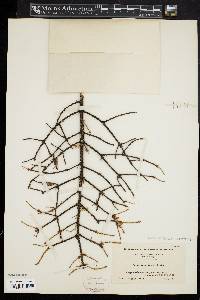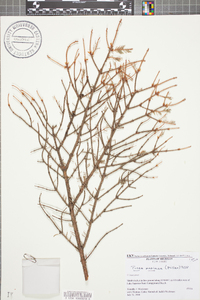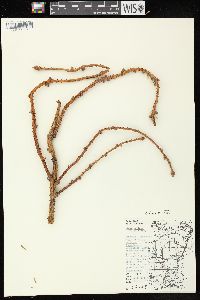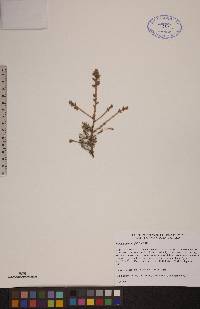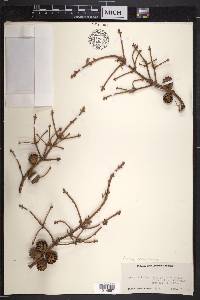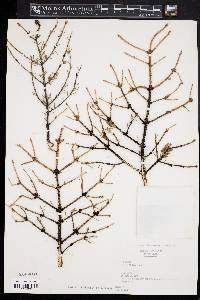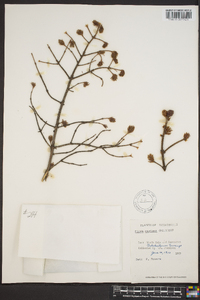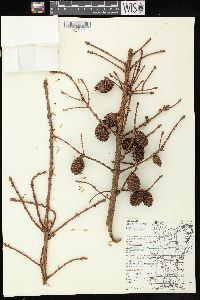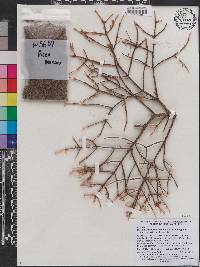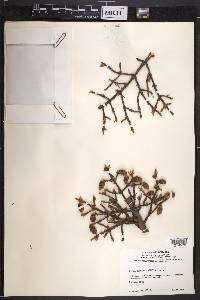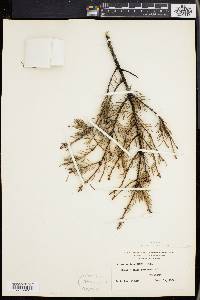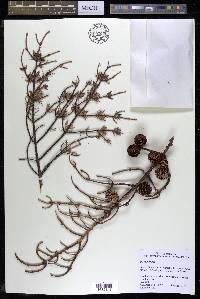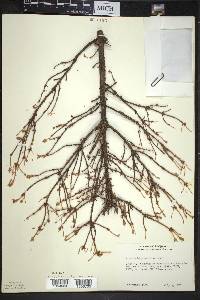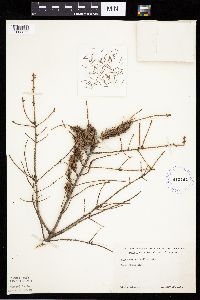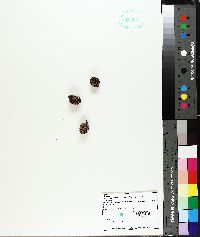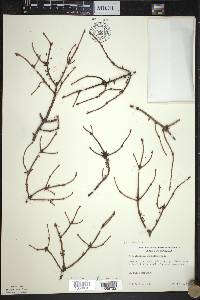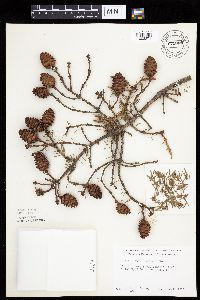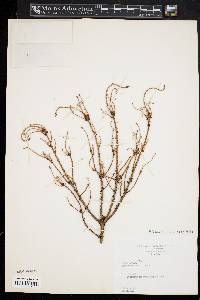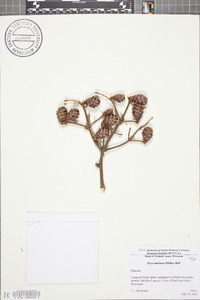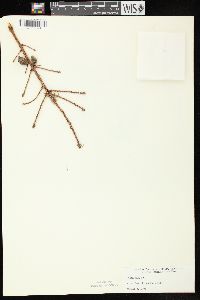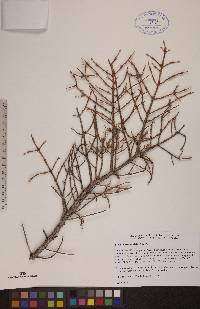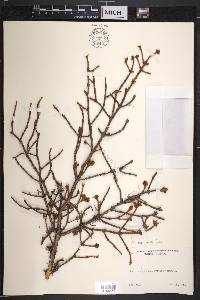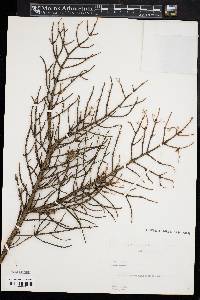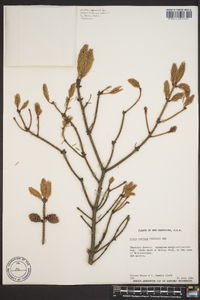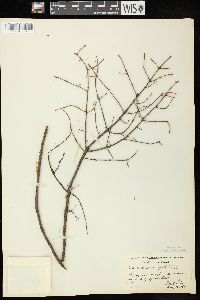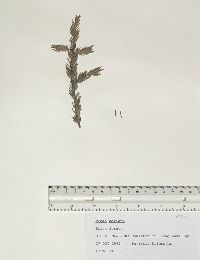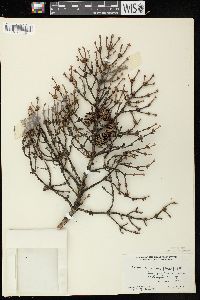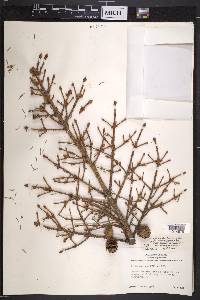Picea mariana
|
|
|
|
Family: Pinaceae
Black Spruce
[Abies mariana Mill., morePicea mariana var. semiprostrata (Peck) Teeri, Picea nigra Link, Pinus mariana (Mill.) Du Roi] |
Trees to 25m (often shrublike); trunk to 0.25m diam.; crown narrowly conic to spirelike. Bark gray-brown. Branches short and drooping, frequently layering; twigs not pendent, rather slender, yellow-brown, pubescent. Buds gray-brown, ca. 3mm, apex acute. Leaves 0.6--1.5(--2)cm, 4-angled in cross section, rigid, pale blue-green, glaucous, bearing stomates on all surfaces, apex mostly blunt-tipped. Seed cones 1.5--2.5(--3.5)cm; scales fan-shaped, broadest near apex, 8--12 ´ 8--12mm, rigid, margin at apex irregularly toothed. 2 n =24. Muskegs, bogs, bottomlands, dry peatlands; 0--1500m; St. Pierre and Miquelon; Alta., B.C., Man., N.B., Nfld., N.W.T., N.S., Ont., P.E.I., Que., Sask., Yukon; Alaska, Conn., Maine, Mass., Mich., Minn., N.H., N.J., N.Y., Pa., R.I., Vt., Wis. To a limited extent, Picea mariana hybridizes with P . rubens , e.g., on disturbed sites in eastern Canada. Natural hybridization with P . glauca , though reported, remains unverified (A.G. Gordon 1976). Because Picea mariana is a small tree, it has limited commercial value. Frequently it is harvested with P . glauca and used for pulp. Black spruce ( Picea mariana ) is the provincial tree of Newfoundland.
Tree 8 - 18 m tall, trunk diameter 20 - 30 cm Bark: grayish brown, thin, separating into thin, appressed scales. Inner bark yellowish to olive green. Twigs: thin, green, with short whitish hairs, becoming reddish brown with rusty hairs. Needle scars raised on short woody stubs, making the twigs rough. Buds: light reddish brown, 3 - 6 mm long, egg-shaped, and slightly pointed. Form: pyramidal, growing narrow and pointed. Pollen cones: dark red, about 1.2 cm long, egg-shaped, on branchlets in the upper crown. Needles: spirally arranged, deep blue-green with a waxy coating (glaucous), 0.5 - 1.5 cm long, blunt-tipped, incurved, stiff, and four-sided (won't roll smoothly between the fingers). Young seed cones: purplish, about 1.2 cm long, cylindrical, at or near the tips of branchlets in the upper crown. Pollination between cones occurs in May and June. Mature seed cones: woody, short-stalked, hanging downward, purplish brown to brown, 2 - 3 cm long, and egg-shaped. Scales close-fitting with toothed margins. Seeds about 3 mm long with light tan wings that are about 1 cm long. Similar species: Spruces are not native to the Chicago Region, but rather the cold, temperate, or boreal regions of the northern hemisphere. They are distinguished from Pines by having four-sided needles borne singly along the branches, whereas Pine needles grow in clusters of two to five. Spruces also differ by having short woody stubs along their twigs which bear raised leaf scars. Habitat and ecology: Normally occurs in bogs or swamps, but has only been found in the Chicago Region at Volo Bog in Lake County, Illinois. It was observed in 1975, but only two small trees were seen and it has not been found since. The occurrence of this species in the area probably represents an introduction (possibly by planting) since it ranges much further north. Occurence in the Chicago region: non-native Notes: Picea mariana is one of the most widely distributed conifers in North America. Although the wood is useful for lumber and pulp, its small size limits production. Spruce gum and spruce beer were once made from this species. Etymology: Picea comes from the Greek word pix (pitch in English), which alludes to the tree's resin. Mariana refers to St. Mary. Author: The Morton Arboretum Tree to 10(-25) m, with a narrow but scarcely spire-like crown, the branches tending to droop; twigs pubescent with crooked or glandular, cylindric hairs; lvs 6-18 mm, radially spreading, straight, often blunt, strongly glaucous, grayish-green; winter buds acute, gray-brown, the lowest scales pubescent and subulate; cones dark purple before maturity, dull grayish-brown when ripe, ovoid, 1.5-3.5 cm, persistent for many years; cone-scales firmly attached to the rigid axis, with thin, brittle, often somewhat pointed, usually dentate or erose margin, often with a bucktooth projection. Usually in Sphagnum bogs, in our range, but sometimes on subalpine slopes, as in the White Mts. of N.H.; Nf. and Lab. to Alas., s. to n. N.J., Pa., Mich., Wis., and B.C. Gleason, Henry A. & Cronquist, Arthur J. 1991. Manual of vascular plants of northeastern United States and adjacent Canada. lxxv + 910 pp. ©The New York Botanical Garden. All rights reserved. Used by permission. |

